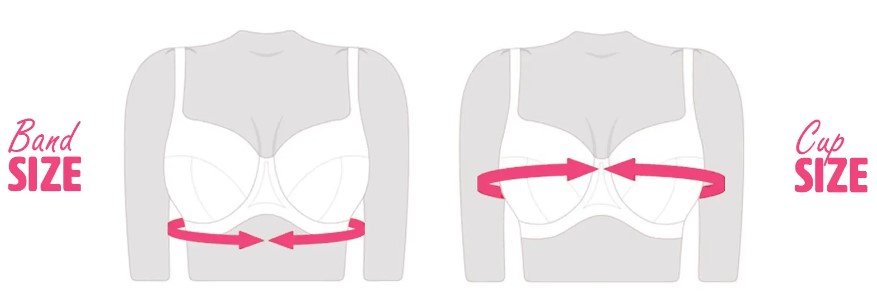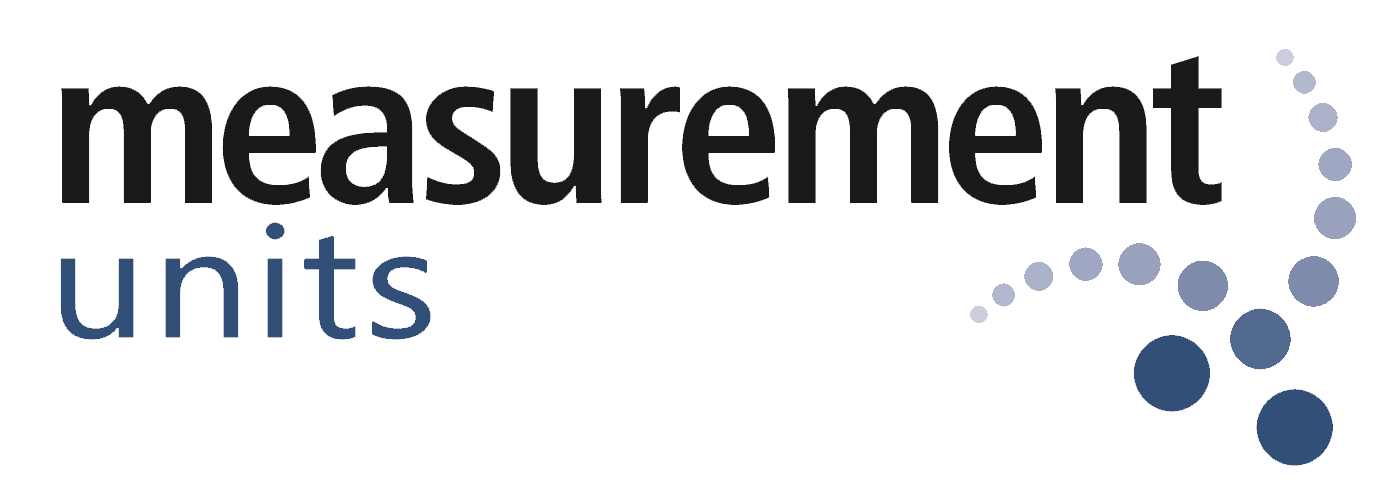Wearing the right bra size is crucial for both comfort and health. However, many individuals find the process of determining their correct size daunting or inconvenient. This guide aims to empower individuals in the UK to measure their bra size at home, emphasizing the importance of accuracy for overall well-being.
Wearing an ill-fitting bra can lead to various issues, including discomfort, back pain, and even breast-related health concerns. The right bra size provides proper support and enhances overall comfort, contributing to confidence and a positive body image.
While professional fittings are available, measuring your bra size at home offers convenience and privacy. It allows for more frequent measurements, considering factors such as weight fluctuations or changes due to pregnancy. Moreover, it empowers individuals to take control of their comfort and confidence.
Get the Perfect Fitting Bra
Getting the perfect fitting bra is a crucial aspect of women’s lingerie choices, transcending beyond mere fashion considerations to impact overall comfort and health. The quest for the ideal bra involves a harmonious balance between style and functionality. A well-fitted bra not only enhances a woman’s silhouette but also provides necessary support to the delicate breast tissues, preventing sagging and discomfort.
Achieving the perfect fit involves understanding key measurements, such as band size and cup size, and considering factors like strap placement and underwire design. Bra shopping often necessitates professional fittings, with experts helping individuals navigate the diverse world of bra styles and materials.
To measure your bra size effectively, it’s crucial to understand the two main components: band size and cup size. The band size corresponds to the measurement around your ribcage, just under the bust. Cup size refers to the difference between your bust measurement and the band size.
Accurate measurements are the cornerstone of finding the right bra size. Wearing an incorrectly sized bra can lead to discomfort, skin irritation, and even impact posture. Regularly measuring and adjusting your size ensures ongoing comfort and support.
Preparation for Bra Measurement
Gathering Necessary Tools
Before starting the measurement process, gather the necessary tools: a soft measuring tape, a mirror, and a notepad. A mirror aids in ensuring the tape is correctly placed, while a notepad allows you to record measurements for future reference.
Wearing the Right Bra for Measurement
To get accurate measurements, wear a well-fitting, non-padded bra. Padded bras can add extra bulk and affect the accuracy of measurements. A non-padded bra provides a more realistic reflection of your natural shape, contributing to precise sizing.
Standing Comfortably during Measurement
Stand in a relaxed and natural position during the measurement process. Avoid arching your back or standing too rigidly, as this can impact the accuracy of your measurements. A comfortable and natural stance ensures that the bra size obtained reflects your everyday posture and movements.
Step-by-Step Guide for Measuring Bra Size
Measure Band Size
- Proper Placement of the Tape Measure: Begin by wrapping the tape measure around your ribcage, just under the bust. Ensure the tape is parallel to the ground for accuracy.
- Taking the Snug and Tight Underbust Measurements: Take two measurements: one snug, where the tape is snug against your skin but not tight, and another tight, where the tape is pulled tightly for a secure fit. Note down both measurements.
- Calculating the Band Size: If the snug and tight measurements differ, calculate the average. The band size is determined by rounding to the nearest whole number. For example, if the average is 32.5 inches, round to 32.
Measure Bust Size
- Taking the Fullest Part of the Bust Measurement: Place the tape measure around the fullest part of your bust, ensuring it’s parallel to the ground. Take this measurement without pulling the tape too tight, as it should sit comfortably across the bust.
- Ensuring the Tape Measure is Parallel to the Ground: A common mistake is tilting the tape upward or downward. Ensure the tape remains parallel to the ground for an accurate bust measurement.
- Calculating the Bust Size: Subtract the band size from the bust measurement. The resulting number corresponds to the cup size. For example, a 34-inch bust with a 32-inch band gives a difference of 2 inches, indicating a B cup size.
Determining Cup Size
- Subtracting Band Size from Bust Size: The difference obtained in the previous step (bust size minus band size) determines the cup size. Use the following guide for UK cup sizes: 1 inch – A cup, 2 inches – B cup, 3 inches – C cup, and so on.
- Utilizing the Difference to Find Cup Size in UK Sizing: Use the difference to determine the appropriate cup size in UK sizing. For example, a 34-inch bust and 32-inch band result in a 2-inch difference, indicating a B cup. Therefore, the bra size is 32B.

Image source: belle-lingerie
Troubleshooting and Adjustments
Tips for Accuracy and Consistency in Measurements
To ensure accuracy, follow these additional tips:
- Measure multiple times to get consistent results.
- Double-check that the tape measure is not twisted.
- Ask for assistance if needed, especially when measuring the back.
Addressing Potential Challenges or Discrepancies
In some cases, discrepancies may arise. If measurements fall between sizes, consider factors like personal comfort preferences. Adjustments can be made based on individual preferences, such as opting for a slightly looser or snugger fit.
Checking for Common Signs of an Incorrectly Sized Bra
After obtaining your measurements and determining your size, check for signs of an incorrectly sized bra. Ensure the band is parallel to the ground and snug but not too tight. Straps should sit comfortably on the shoulders, and there should be no spillage or gaps in the cup.
Bra Technology & Terminology
Bras are made with various fabrics and construction techniques to provide support and comfort. Common materials include cotton, microfiber, and lace, while seams, wires, and closures offer different levels of structure and adjustability. New technologies like seamless construction and moisture-wicking fabrics are constantly improving the bra experience.
Understanding bra terminology like cups, bands, straps, and different bra styles is crucial for finding the right fit. Remember, a perfect-fitting bra should be snug but comfortable, with cups fully encompassing the breasts and straps preventing the bra from riding up.
Technology:
- Materials: Bras are typically made from a combination of fabrics, each with specific properties:
- Cups: Cotton, microfiber, lace, and sports mesh are common choices, offering breathability, comfort, and support.
- Bands: Elastic bands provide support and adjustability.
- Straps: Adjustable straps made from elastic or non-elastic materials ensure a comfortable fit.
- Construction: Different techniques are used to create various bra styles and functionalities:
- Seams: Seams can be flat, reinforced, or bonded to offer comfort and support.
- Wires: Underwires provide lift and support, while encapsulation bras offer full coverage without wires.
- Closures: Hooks and eyes, zippers, and front closures provide different levels of adjustability and ease of use.
- Innovation: The bra industry is constantly evolving, with new technologies emerging:
- Seamless construction for improved comfort and fit.
- Moisture-wicking fabrics for better breathability during exercise.
- 3D printing for personalized and customized bra fitting.
Terminology:
- Basic bra parts:
- Cups: Enclose the breasts.
- Band: Supports the breasts and connects the cups around the torso.
- Straps: Support the breasts and connect the cups to the shoulders.
- Hook and eye closures: Secure the band around the torso.
- Bra styles:
- Balconette bra: Low-cut with a horizontal neckline.
- Sports bra: Designed for high-impact activities, providing maximum support.
- Push-up bra: Enhances cleavage with padding or lift features.
- Convertible bra: Offers multiple strap options for different necklines.
- Fit terminology:
- Band: Snug but comfortable around the torso, not digging in.
- Cups: Fully encompass the breasts without spillage or gapping.
- Straps: Adjustable to prevent the bra from riding up.
It’s important to note that bra terminology can vary across brands and retailers. Familiarizing yourself with these terms can help you choose the right bra for your needs and ensure a comfortable and supportive fit.
Additional Tips and Considerations
Factoring in Fluctuations due to Weight Changes of Pregnancy
Keep in mind that weight fluctuations, hormonal changes, and pregnancy can impact bra size. Measure regularly, especially during significant life changes, to ensure ongoing comfort and support.
Knowing When to Re-Measure for Optimal Comfort
As a general rule, it’s advisable to re-measure your bra size every six months or whenever you notice changes in your body, such as weight gain or loss. Regular re-measurement ensures that you consistently wear the right size for optimal comfort.
Seeking Professional Fitting if Unsure about Measurements
While measuring at home provides convenience, seeking a professional fitting is advisable if you have doubts about your measurements or encounter challenges. Professional fitters can offer personalized advice and ensure a precise fit.
Conclusion:
Mastering how to measure your bra size at home in the UK is a game-changer for comfort and confidence. This step-by-step guide empowers you to take control of your lingerie choices, ensuring a perfect fit that goes beyond aesthetics. Regular measurements and adjustments, coupled with awareness of common pitfalls, contribute to a healthier and more comfortable bra-wearing experience.
By following these simple steps, you not only enhance your well-being but also embrace the convenience of achieving the right fit from the comfort of your own home. Say goodbye to discomfort and hello to a wardrobe that supports you in every way possible. Happy measuring!
Frequently Asked Questions (FAQs)
To measure your bra size at home:
Wrap a tape measure snugly under your bust for the band size.
Measure around the fullest part of your bust for the cup size.
Subtract the band size from the bust measurement to determine the cup size.
Use these measurements to find your bra size.
Your bra cup size is determined by subtracting your band size from your bust measurement. For example, a 34-inch bust with a 32-inch band results in a 2-inch difference, indicating a B cup size. Use this difference to find your cup size in the ABCD scale.
The ABCD in bra size represents different cup sizes:
A cup: 1-inch difference between bust and band size.
B cup: 2-inch difference.
C cup: 3-inch difference.
D cup: 4-inch difference. These letters correspond to the cup size based on the calculated difference.
You can find your bra size by measuring yourself at home using a soft tape measure. Wrap it around your ribcage for the band size and around the fullest part of your bust for the cup size. Once you have these measurements, consult a sizing chart or use an online calculator to determine your accurate bra size. Many lingerie retailers also provide fitting guides to help you find the perfect fit when shopping for bras.
